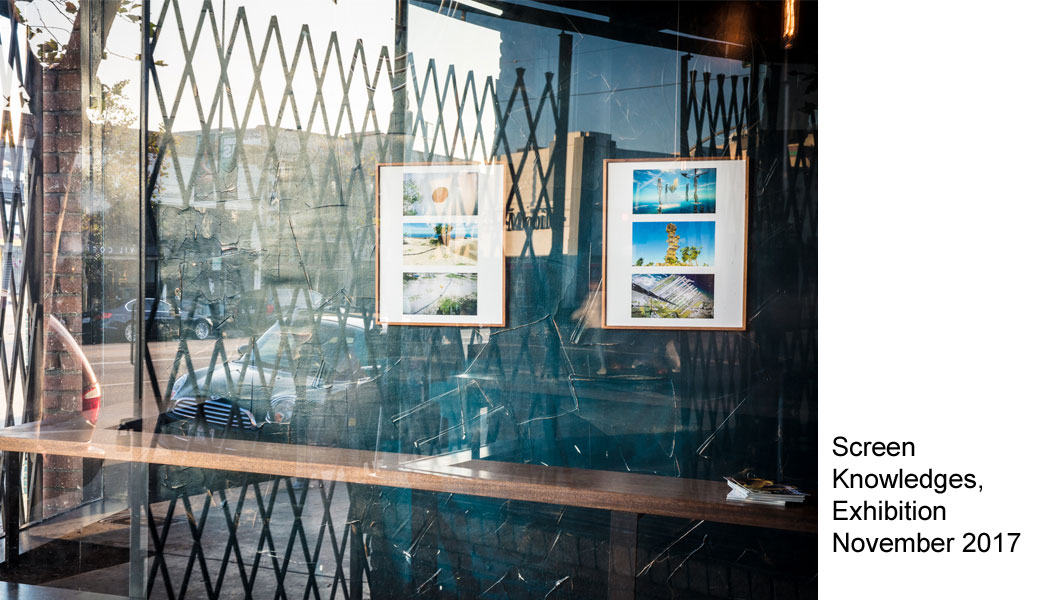
Essays In Conversation 3: Building Your Digital White Whale To Take Its Photo

Eron Rauch: Your project for Screen Knowledges was a return to Garry's Mod as a source material. Can you tell me a bit about your history with the game and what makes it such a compelling foil?
Kent Sheely: I was introduced to Garry's Mod shortly after it came out. So it would have been like 2005, 2006. It was when I was still in school and trying to figure out what I wanted to with my work going forward. It was something I'd do with a friend of mine who was in the same program as I was. We would both join the same game of the same server and collectively let whatever came to mind just build. Because Garry's Mod is a sandbox, you can bring in objects and build with them. Build vehicles, build structures, whatever you want. And there's also a wealth of assets and tools that people online have uploaded. So it's really, it's an endless creative realm.
It has so much creative potential in it but it has its own rules. It has its own framework. It's built in Source Engine. So it's got the Source Engine's collision detection and gravity. It became the template for what a lot of my later work about working within restrictive rules to create things that were unintended from the original. Garry's Mod was originally just intended as a toy. But I continually come back to it just because it's like a big bucket of LEGOs, where you have to work within the rule set that the toy has in place. But you can pretty much build anything. You're restricted but it has unlimited potential if that makes sense? So that's why I keep coming back to it. Just because it's the only mainstream game I've ever found that works that way.
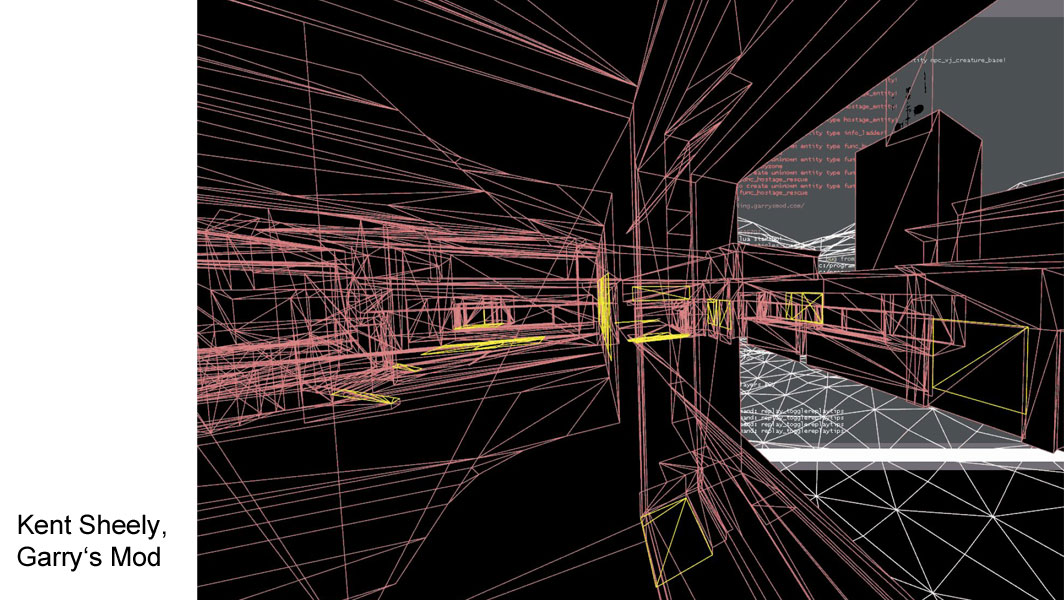
Eron Rauch: I want to hear more about this notion of returning to what got you artistically fired up a long time ago. The reason you came back to Garry's Mod was that you were going through a creative slump, right?
Kent Sheely: Yeah. I was just thinking back to what got me excited about working with games as art. Garry's Mod was something that I found a lot of joy in, but it also lead to me creating things that have informed my work to this day. So I just really wanted to tap back into that source and figure out what it was that I found so enjoyable about it: It was breaking things in a structured way.
Garry's Mod itself breaks Half Life 2. So I think that was what inspired me. I was going through this period where I didn't know what I wanted to do going forward. And so I thought, “Knowing I've gained knowledge from the past ten years, let's see what I can do with the tools that I started with.”
There's so many other things that Garry's Mod does now. There's a server where it's just movie theaters, where you can just go in and watch a movie with random people online and they all have My Little Pony avatars. It's insane, but it's just something that I still enjoy going back to. Because it is constantly evolving just like my work processes.
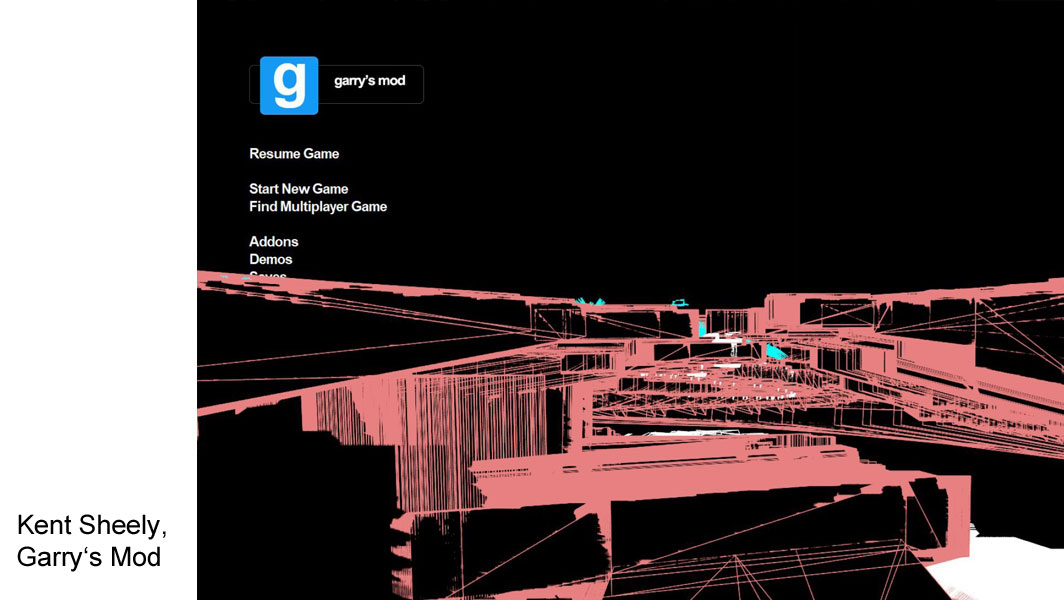
Eron Rauch: I wanted to talk a little bit more about the process of your current body of work. The whole framework of the show is photography in the era of video games. Photography has evolved in the last 100 years, and is up to very interesting things now, whether it's Thomas Demand making—
Kent Sheely: Structured scenes.
Eron Rauch: Structured scenes is very Jeff Wall too! Or Trevor Paglen trying to photograph the un-photographable, like spy satellites. The current photographic discourse is very interesting and complicated. The reason I'm asking about this is because in the early days of screenshot photography it often felt like we were photographing gardens or architecture. We were rooting around for interesting choices made by the people that made our subjects.
For instance, my interest in World of Warcraft came from a broader interest in the visual language of imperialism and colonialism in photography. I was fascinated by the way that the visual language of World of Warcraft'+s world was very similar to photos of ancient Egypt in the 1800s or photos of the American West before it became formal states. There's this visual language of beauty but mostly bounty and adventure.
So in the early days of screenshot photography, interest was maybe more about resonance, about saying “This is an interesting connection.” But what's changed is that much current work is increasingly becoming about producing either a situation or object to be photographed, much like Wall and Demand.
Kent Sheely: It's kind of like: “If I can't find my white whale, I'll build the white whale and take a photo of that.” It's setting up the ideal world that you want to photograph.
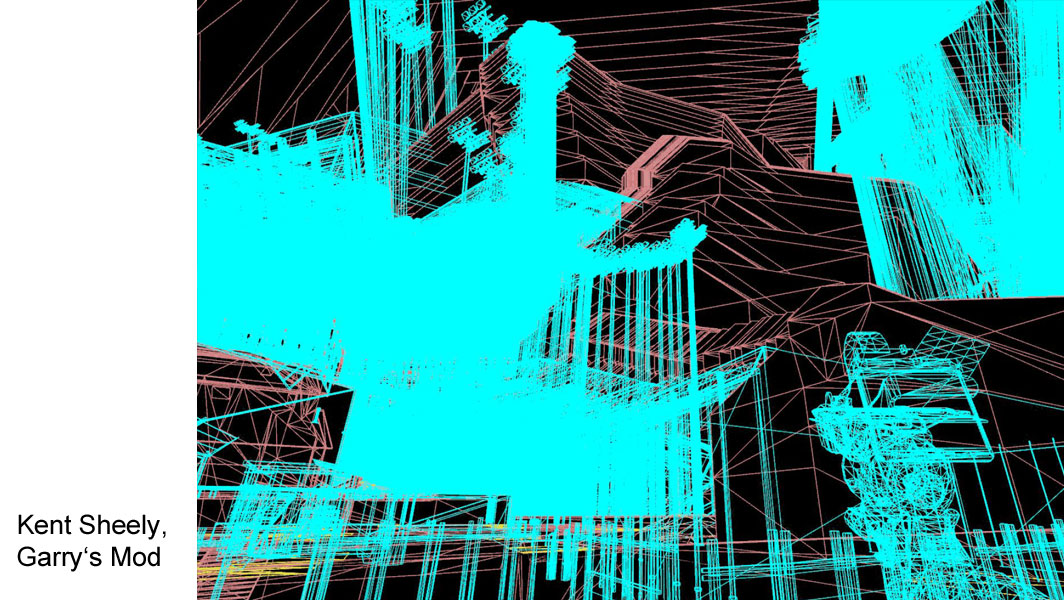
Eron Rauch: Well, your ideal world is very interesting: it shows the command console! That's so the opposite of a “beautiful” scene trying to pass itself off as real.
Kent Sheely: That was a side effect because originally I was doing structured wireframe photos, where I was just setting up situations. A little bit of context: Garry's Mod has a hidden function that lets you reduce the world you're looking at to just its wireframe, removes all the texturing. It's just the structure.
Originally, I started just setting up scenes that I wanted to photograph as wireframes. I was still constructing those scenes, creating the photograph that I wanted, creating the color palette or the layouts I wanted. But then I discovered is that you can turn off the skybox (the thing that draws the fake sky).
Eron Rauch: So the landscape just goes to Tron infinity?
Kent Sheely: Yeah [with the skybox missing] the game gets confused. It's just infinite space out there. Normally, each frame that you see includes everything that's in that shot, the background and foreground elements. When you take away the background, it starts trying to draw the foreground on top of itself because it doesn't have anything to put it on. It ghosts each frame cell. One frame has a house in it, and then you move the mouse, and the next frame that it captures has that previous house in its former location, still there, ghosting on the screen because there's nothing to render in its place. It's like long exposure photography.
Eron Rauch: It's like an afterimage?
Kent Sheely: Yeah, an afterimage. Once I discovered I could remove the skyboxing and create those kinds of broken images, I was more interested in that than the structured still lifes that I was originally working with. Once I realized I could create that directed chaos, that became my focus. “How can I move my mouse? What console commands can I use to create a more interesting image than just what I'm looking at?”
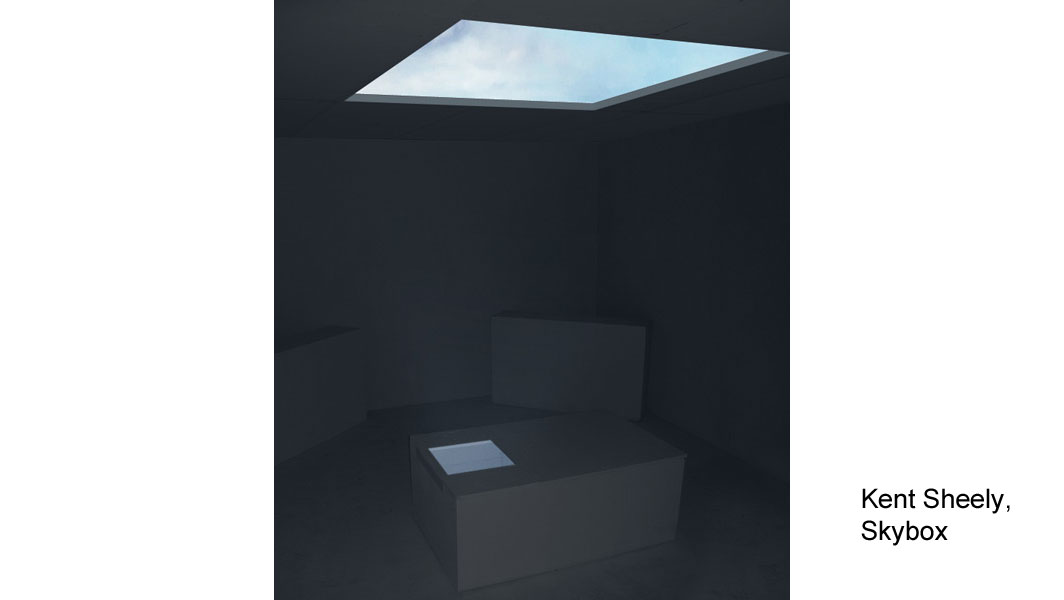
Eron Rauch: I've thought about a lot of these things in musical terms, like expanding on the electric guitar, right? The electric guitar originally exists as this proxy-but-louder version of an acoustic guitar.
Kent Sheely: But the thing is, this tool has new properties.
Eron Rauch: Distortion. Feedback. Sustain.
Kent Sheely: They're accidental originally. That's what people do with kit bashes with electronics, like hacking fucking Tickle Me Elmos. They discovered these things that were built into the software that are horrible, but they make really interesting results.
Eron Rauch: Or like Chris McCaw in photography, who has those incredible Sunburn drawings where he exploits the idea of light focusing through the lens of the camera. He physically etches the film with light from using the camera “wrong.”
Kent Sheely: “What if light, but too much?”
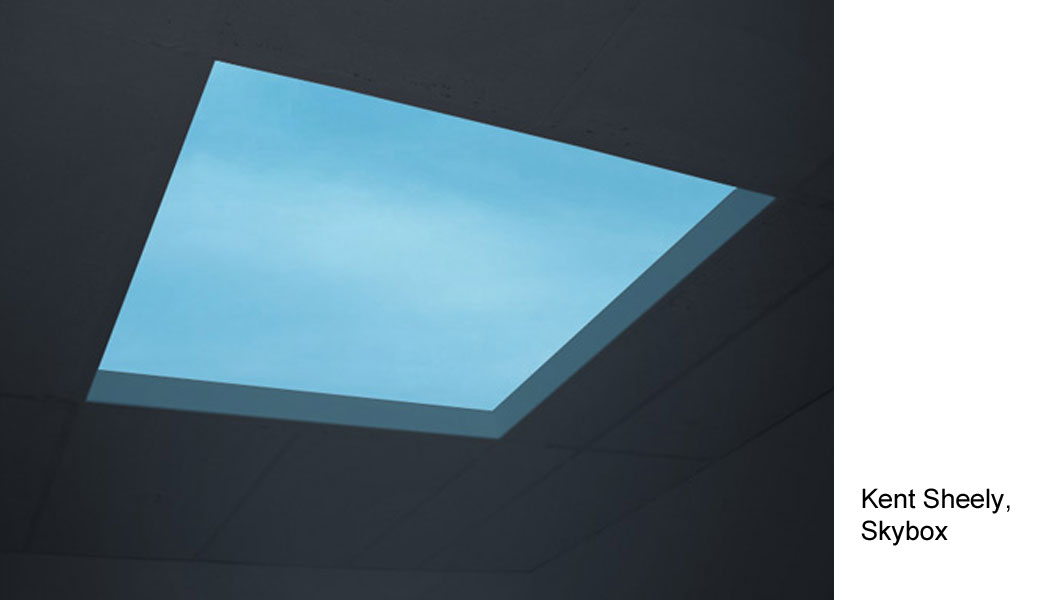
Eron Rauch: Yeah, so he has to mod his cameras with smoke vents! The final pieces are awe-inspiring because they're reminding you of a physical property that is usually hidden. In a lot of cases, all the artists in the Screen Knowledges show are reminding us, in one way or another, about some physical property of video games and photography that normally goes hidden.
Kent Sheely: When I was in my undergrad installation class, they always drilled into us, "Don't show your magic. Don't show how this effect is achieved. Just show the end result.” But then I found it so much more interesting to show the magic.
I had that piece called "Skybox" that was creating a skylight that was a virtual. It would change what you saw through the skylight based on real weather patterns. But everything you saw was digital. It was all captured from video games. Originally, I wanted to hide the magic and have all of that shit up in the ceiling, where you couldn't see it. It would just look like a skybox. But I found it so much more interesting to have the box in the room projecting.
Eron Rauch: That notion of "hide the magic" is different in an era where everything technological is vaguely magical it is so unfathomable. It's like, “Who here can engineer a phone?” Or how it takes a team of 100’s of people $100 million to make these games. The corporate and oppressively banal side are all based on hiding magic! A better magic is pointing out that real people made these decisions; that these are things are malleable human-scale objects, despite their monolithic façade; that they are fallible. That's why glitches are so great.
Kent Sheely: It feels like such an antiquated notion to me to be like, "Oh no, don't look at what's going on behind the scenes. Only look at this finished play. Don't look at the people clad in black that are pulling the strings. Don't look at those people. Those aren't important to the story."
Eron Rauch: It's like the old valuation of “hiding your brushstrokes” in painting. This is what's fascinating to me: as a curator dealing with both video games and conceptual art, people have not been saying to “hide your brush strokes” in the fine art world for almost 150 years! It has been all about Manet and his deliberately showing brushstrokes, right?
Kent Sheely: It's making it less arrogant, too. “Yeah, here's everything that I typed into the console for the last half hour. Here's all the error messages that I got. Yeah, I made this in a fucking video game. I made this in Garry's Mod. This is how I did it.”

